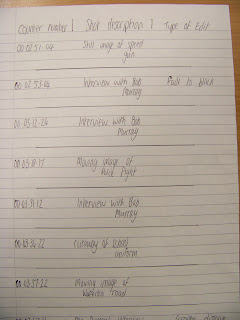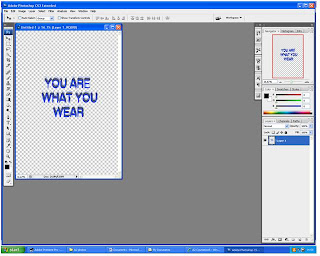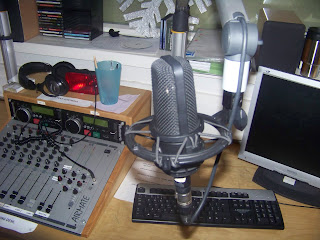Yes-10
No-0
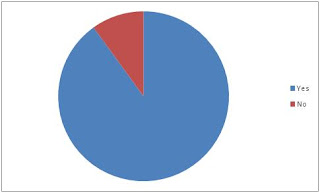
This chart shows that our audience think that the camerawork and the music we used suited the genre of our documentary.
2. Does our documentary flow well?
Yes-10
N0-0
We received positive comments such as ‘cutaways and our voiceover linked well’. And this also shows that our audience think that our documentary flowed well.
3. Is our Documentary Well edited?
Yes-9
No-1
We received feedback saying what we could improve such as ‘more cutaways’. In other feedback, audiences have said that we could have framed the interviews better. But 9 out of 10 people said that our documentary is well edited.
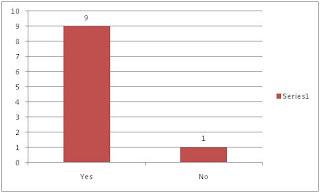
4. What do you think of the title sequence?
Interesting-3
Eyecatching-2
Variety-1
Creative-1
Music-1
Good-2
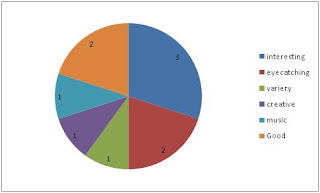
Our feedback for this question shows that most of the audience thought our title sequence was interesting and eyecatching. Few people said the title sequence was variety, and creative and that they enjoyed the music.
5. What do you think of our soundtrack?
Relevant-7
Good-1
Catchy-1
No Opinion-1
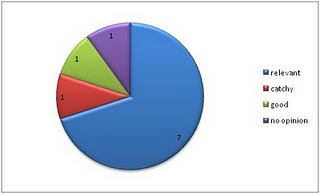
This feedback shows that the target audience thought the soundtrack was relevant to our topic and flowed well with it.
6. Would you watch the whole documentary?
Yes-8
On 4oD-1
Not Sure-1
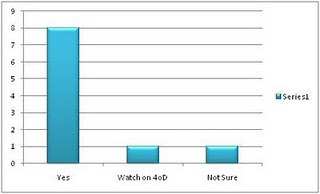
This chart shows that most people would watch the whole of our documentary, however one person said they wasn't sure and another said they would watch it on 4OD.
7. What was your favourite part of the documentary?

Most people here said that their favourite part of the documentary was the subject. The least favourite part of our documentary were the cutaways.
8. Do you think our documentary appeals to our target audience of 16-24 year olds?
All the 10 people we asked answered yes.
This question shows that all of our focus group think that the documentary appeals to our target audience and so they would watch ot too.
9. Do you think our documentary is suited to channel 4?
Out of the 10 people we asked they all answered yes.
This question shows that all of our focus group agreed that our documentary was well suited to channel 4.
10. How do you think our documentary compares to real documentaries?
10 people said very similar.
This shows that all of our focus group agree that our documeantary compares very well to real documentaries.
11. What are the strengths and weaknesses of our documentary?
Strengths:

This chart shows that our target audeince thought that the interviews, editing and the music were our strengths during the process of our documentary.
Weaknesses:
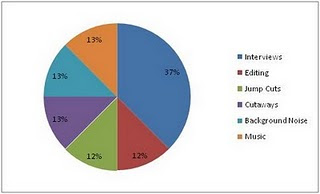
This chart shows that 37% of our focus group thought our interviews were a weakness. However, cutaways, music and background noise all received 30% weakness.
12. Does our radio trailer entice you to watch the documentary?
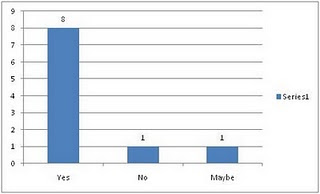
This shows that 8 people out of our focus group thinks the radio trailer entice's you to watch our documentary. 2 people disagreed.
13. Does our print advert draw you in and interest you enough to watch our documentary?
All 10 people answered yes.
All 10 people from our focus group said that the print advert draws you in and interests them enough to watch our documentary.
14. What do you like and dislike about our advertising campaign?
Like:
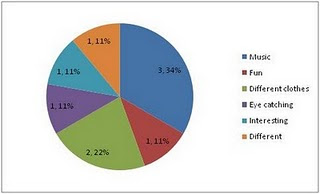
This chart shows that most people liked the music in our advert campaign.Another large percent shows that they enjoyed all the different clothing throughout the documentary.
Dislike:
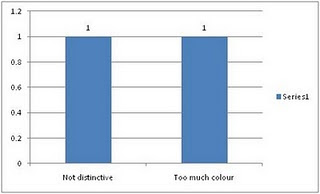
This chart shows that 2 people disliked the too much colour, and also thought that the documentary was not distinctive enough.












